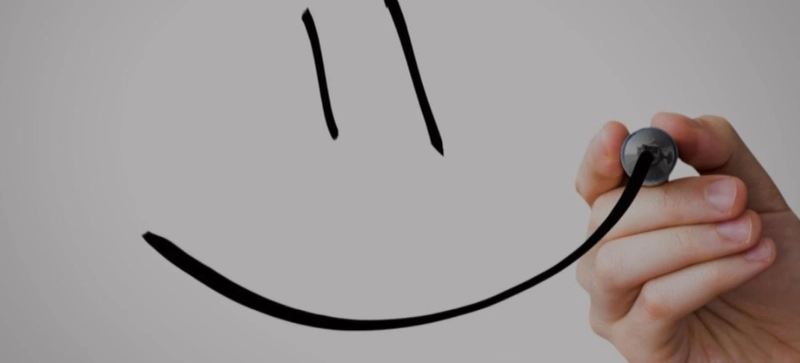In today’s cluttered mailbox environment, capturing a recipient’s attention is more challenging than ever. People are bombarded with emails, social media notifications, and various marketing messages daily. In this noisy digital world, a well-crafted direct mail piece has the power to cut through the chaos but only if it creates a strong, positive first impression. One subtle yet highly effective way to achieve this is through print finishes. These finishing techniques can transform a simple mail piece into an engaging, memorable experience that encourages recipients to respond.
Why Print Finishes Matter?
The old saying, “Don’t judge a book by its cover,” may hold in life, but in direct mail marketing, the cover often determines whether the message inside is ever read. The weight, texture, and sheen of paper send subconscious cues to the recipient about the brand and the quality of the product or service being promoted.
A dull, flat mailer may be ignored, tossed aside, or even considered spam, while a mailer with tactile appeal can draw attention, evoke curiosity, and stimulate the senses. Research has demonstrated that tactile and visually appealing mail pieces consistently outperform standard flat prints.
Understanding Different Types of Print Finishes
UV Coating
Ultraviolet (UV) coating is a popular choice for adding a glossy finish to printed materials. It not only enhances the visual appeal but also provides durability and protection against wear and tear. UV coating can be applied to the entire surface or selectively to certain areas, creating a contrast that draws attention to specific elements.
Embossing and Debossing
Embossing involves raising certain areas of the paper to create a three-dimensional effect, while debossing presses areas into the paper to create an indented effect. Both techniques add a tactile dimension to the mail piece, making it more engaging and memorable.
Foil Stamping
Foil stamping uses heat and pressure to apply metallic foil to paper, creating shiny, reflective surfaces. This technique is often used for logos, headlines, or other focal points to add a touch of luxury and sophistication. Recipients are more likely to interact with mailers that use foil because they visually stand out from plain printed materials.
Matte and Soft-Touch Finishes
Matte and soft-touch coatings appeal through subtlety. Soft-touch finishes feel velvety and luxurious, making the act of holding the mailer an enjoyable experience. It also reduces glare and creates an elegant, understated look. Both finishes can evoke sophistication, trust, and professionalism qualities that are particularly effective for high-value products or services.
Textured Papers
Incorporating textures into print materials can enhance the sensory experience. Textured papers or finishes like linen, felt, or soft-touch coatings can make the mail piece more pleasant to handle, increasing the likelihood of it being kept and read.
The Emotional Impact of Print Finishes
Beyond aesthetics and durability, print finishes play a critical role in creating an emotional connection with the audience. A mailer that feels high-quality can generate a sense of exclusivity, trust, and credibility. When recipients feel valued and impressed by the quality of the mailer, they are more likely to open it, read it, and respond.
The psychology behind tactile marketing is simple: humans respond to touch. A mailer that engages multiple senses, sight, touch, and even sound (like a thick, crisp paper) creates a stronger impression.
Enhancing Direct Mail Campaigns with Strategy
While high-quality finishes are impactful, they are most effective when paired with a strategic approach. The key is to create a cohesive experience that guides the recipient’s attention and encourages action.
- Highlighting the Call to Action: Using print finishes to draw attention to calls to action, such as an RSVP, coupon code, or website URL, can increase the likelihood of response. For example, a gold foil stamp on a “Claim Your Offer” section can immediately draw the eye.
- Segmenting the Audience: Not every recipient responds to the same type of mailer. Segmentation allows marketers to match print finishes with audience preferences. Younger audiences may respond to vibrant gloss finishes and playful textures, while professional audiences might appreciate embossed logos and matte, understated coatings.
- Testing for Effectiveness: Conducting A/B testing with different finishes is critical. By comparing responses to different treatments, such as glossy vs. matte, embossed vs. flat, marketers can determine which finishes yield the highest response rates for their specific audience.
Integrating Print and Digital
Print finishes can be even more powerful when integrated with digital elements. QR codes, personalized URLs, and augmented reality can bridge physical mail with online engagement. This combination of tactile and digital engagement has been shown to increase response rates and create a memorable customer experience.
Practical Considerations
While print finishes can enhance engagement, it is important to balance creativity with practicality. Excessive or poorly executed finishes can overwhelm the recipient or increase costs without delivering proportional benefits.
Here are some key considerations:
- Cost vs. Value: Premium finishes can be expensive, so they should be reserved for segments where the return on investment justifies the expense.
- Compatibility with Mailing Equipment: Some finishes, particularly thick embossing or foil, may require special handling. It’s essential to ensure mailers meet postal requirements.
- Consistency Across Campaigns: Maintaining a consistent style of finishes across all mailers reinforces brand identity and strengthens recognition.
The Role of Direct Mailer Printing
Understanding the nuances of direct mailer printing is critical for marketers aiming to maximize response rates. Selecting the right paper, finish, and design combination requires insight into both human psychology and marketing strategy. By investing in finishes that elevate the tactile and visual appeal, marketers can transform ordinary mailers into tools that not only capture attention but also inspire action.
Even subtle enhancements like a selective gloss or soft-touch coating can make the difference between a mailer being opened immediately or discarded without a glance. Every detail counts when competing for attention in the mailbox.
Conclusion
In an age dominated by digital marketing, print finishes provide a tangible advantage for direct mail campaigns. They elevate the perceived value of a mailer, create emotional connections, and increase the likelihood of engagement and response. By understanding their audience, aligning finishes with brand identity, and strategically highlighting key elements, marketers can harness the full potential of direct mailer printing to achieve higher response rates.
In the end, as the saying goes, “You never get a second chance to make a first impression.” In direct mail, that first impression can mean the difference between being opened or tossed, remembered or forgotten. Investing in the right print finishes ensures that every piece of mail makes an impact worth remembering.


